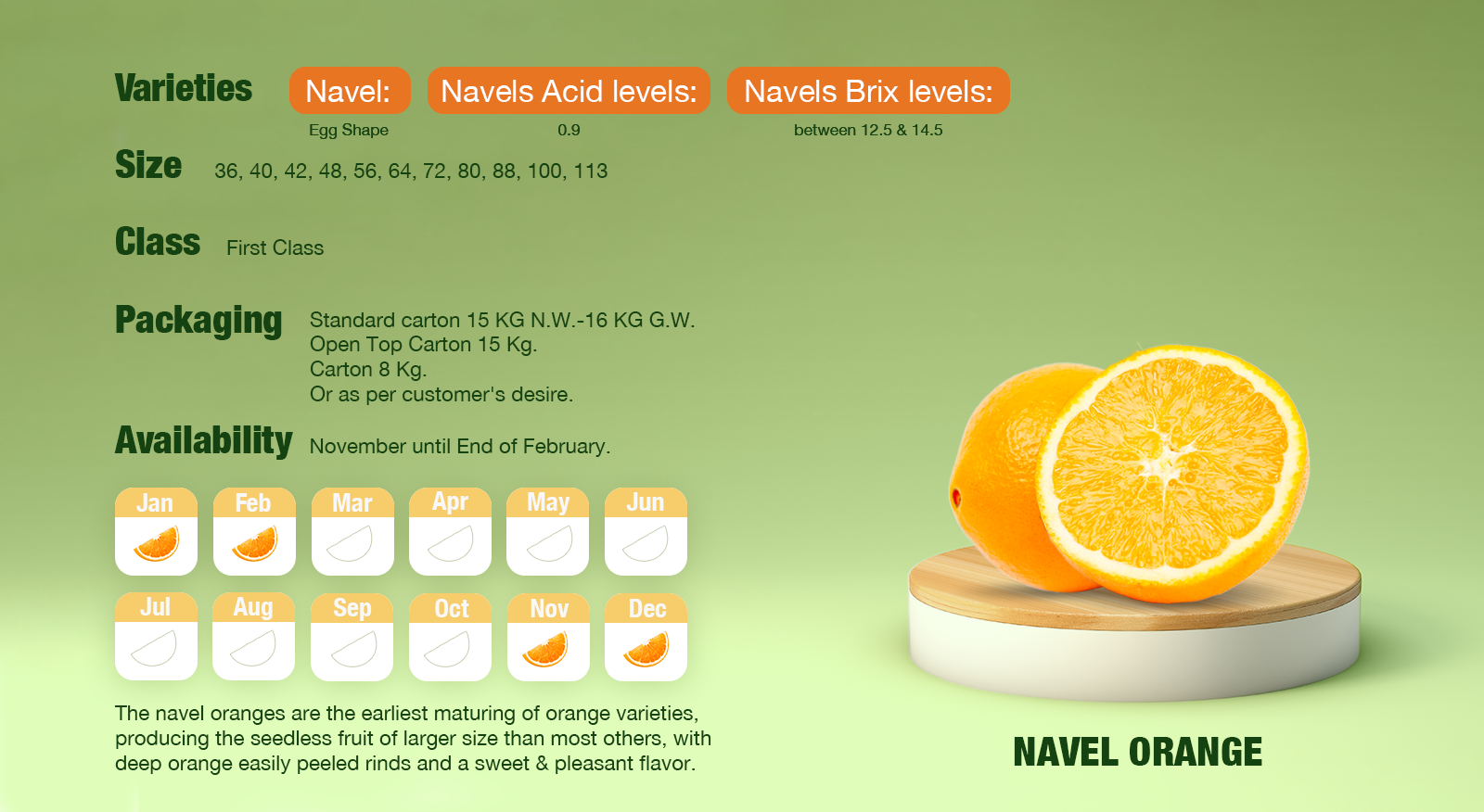Navel Orange

Citrus is one of the most popular and widely grown fruit crops in the world. Citrus and its products are a rich source of vitamins, minerals and dietary fibre that are essential for the overall nutritional well-being. Among the most commonly cultivated types, oranges account for more than half of world citrus production and are the most widely traded citrus fruit followed by tangerines, lemons and grapefruits. World citrus production and export have grown steadily over the past three decades, although at a slower pace than competing fruits such as mangoes, avocadoes and melons.
The navel oranges gets its name from the small hole that resembles a belly button, or human navel, at the blossom end of its stem. When peeled, the blossom end reveals an undeveloped second fruit inside.
The navel oranges are the earliest maturing of orange varieties, producing the seedless fruit of larger size than most others, with deep orange easily peeled rinds and sweet & Pleasant flavor.
Navel oranges have a sweet flavor, which is balanced with tanginess and tartness, but without too much acidity.
Navel oranges can be used in various dishes, such as salads, sauces, and desserts. In general, you can use navel oranges in recipes that call for oranges without specifying which variety.
A 100-gram serving of navel oranges is 87 percent water and provides 52 calories and 12 grams of carbs, along with 2 grams of fiber, less than one gram of protein, and negligible fat. It also provides 59 milligrams of vitamin C, which is about 72 percent of the USDA daily value, making navel oranges an excellent source of this nutrient.
Available from November to the end of February.

